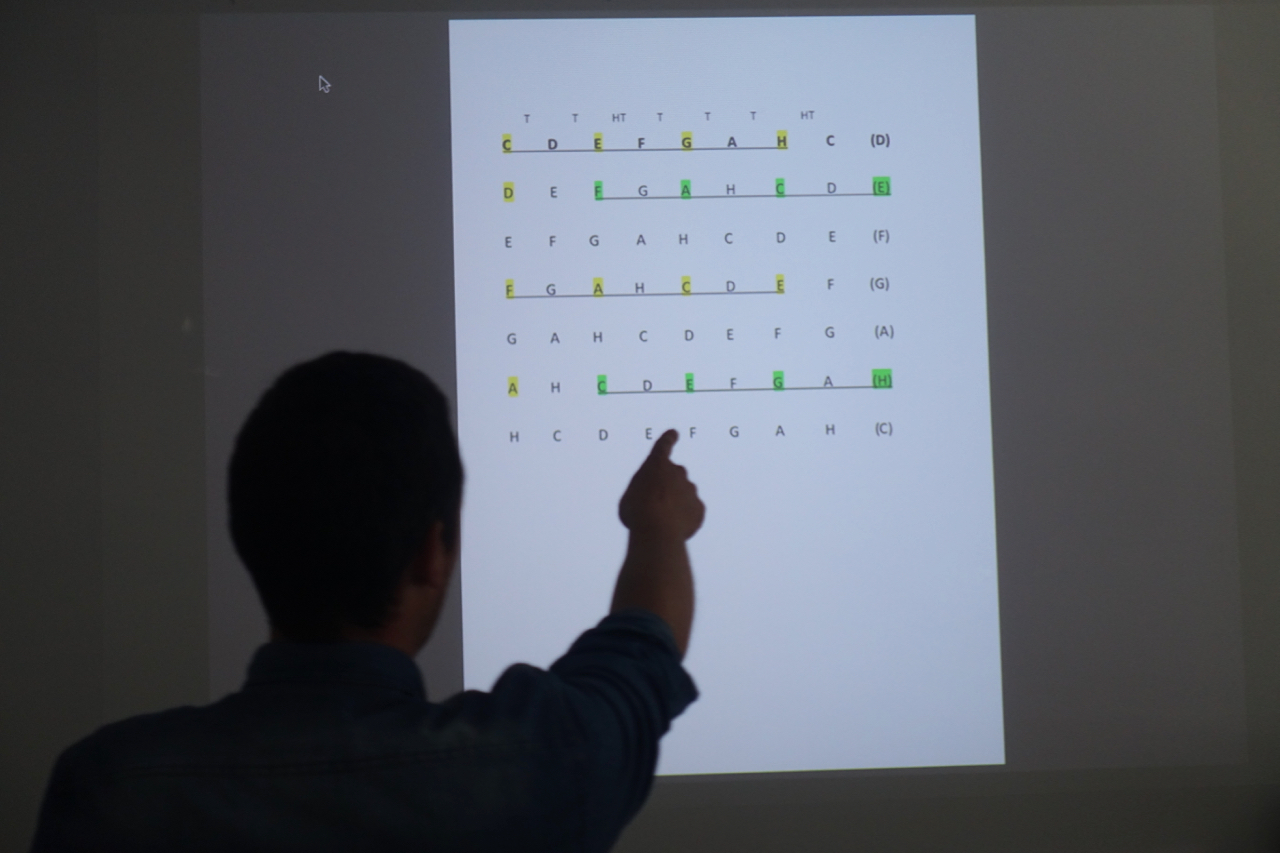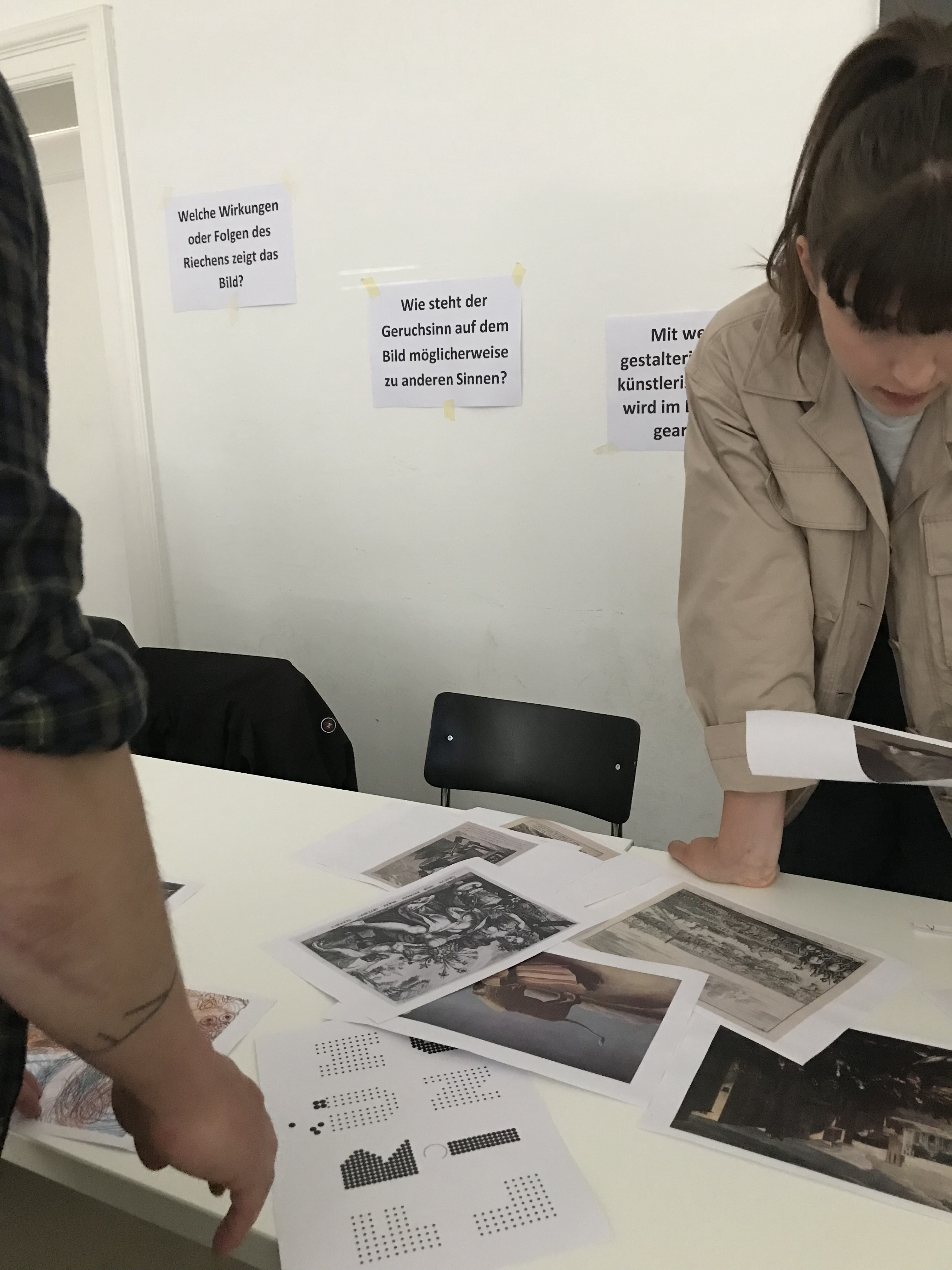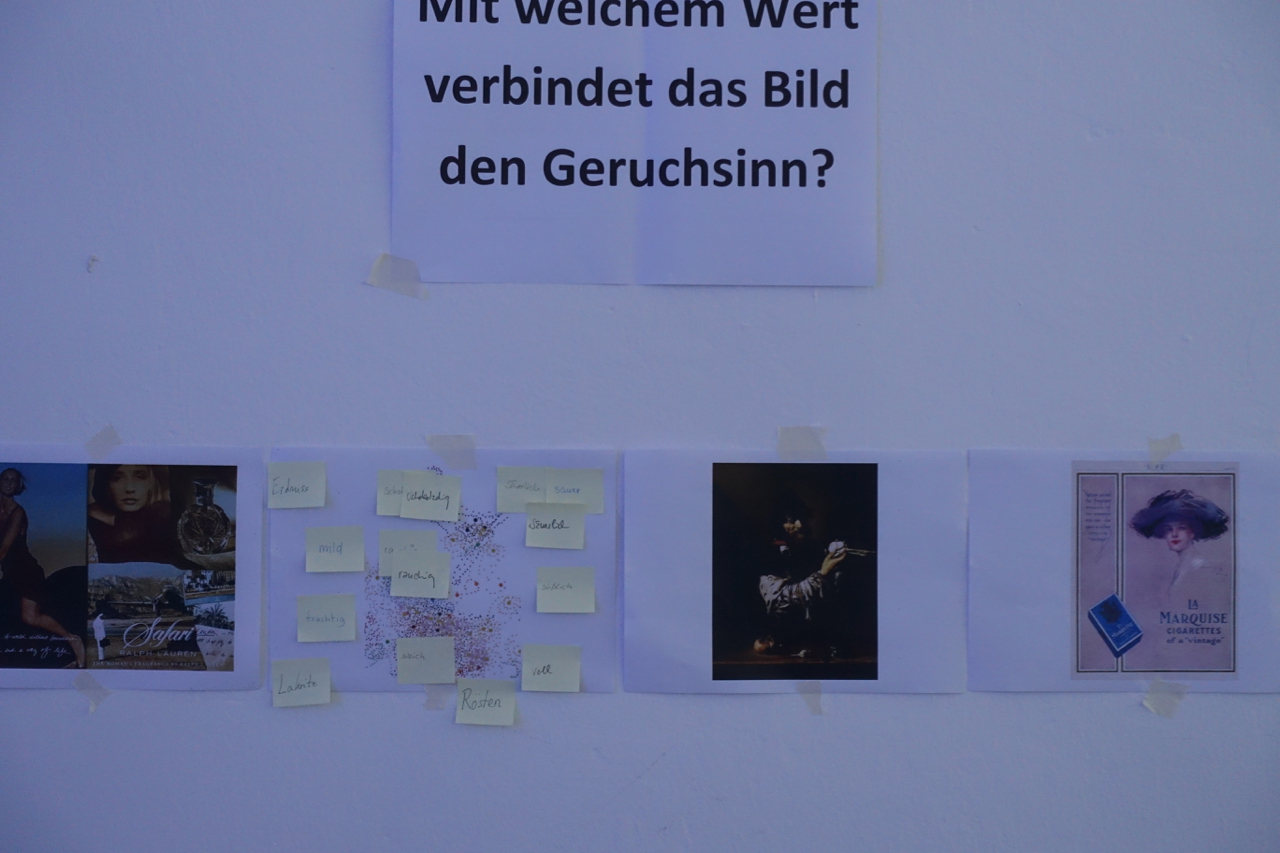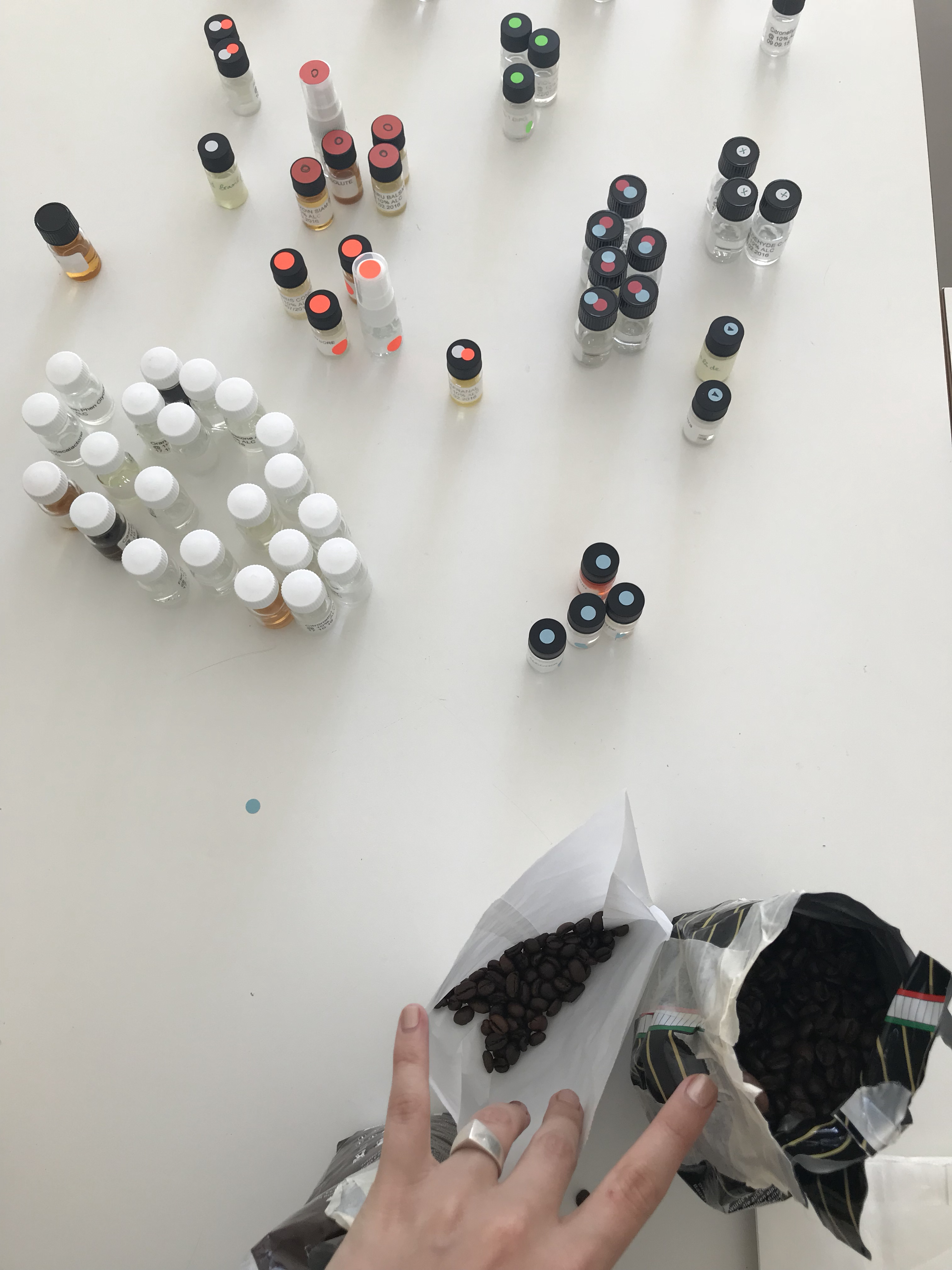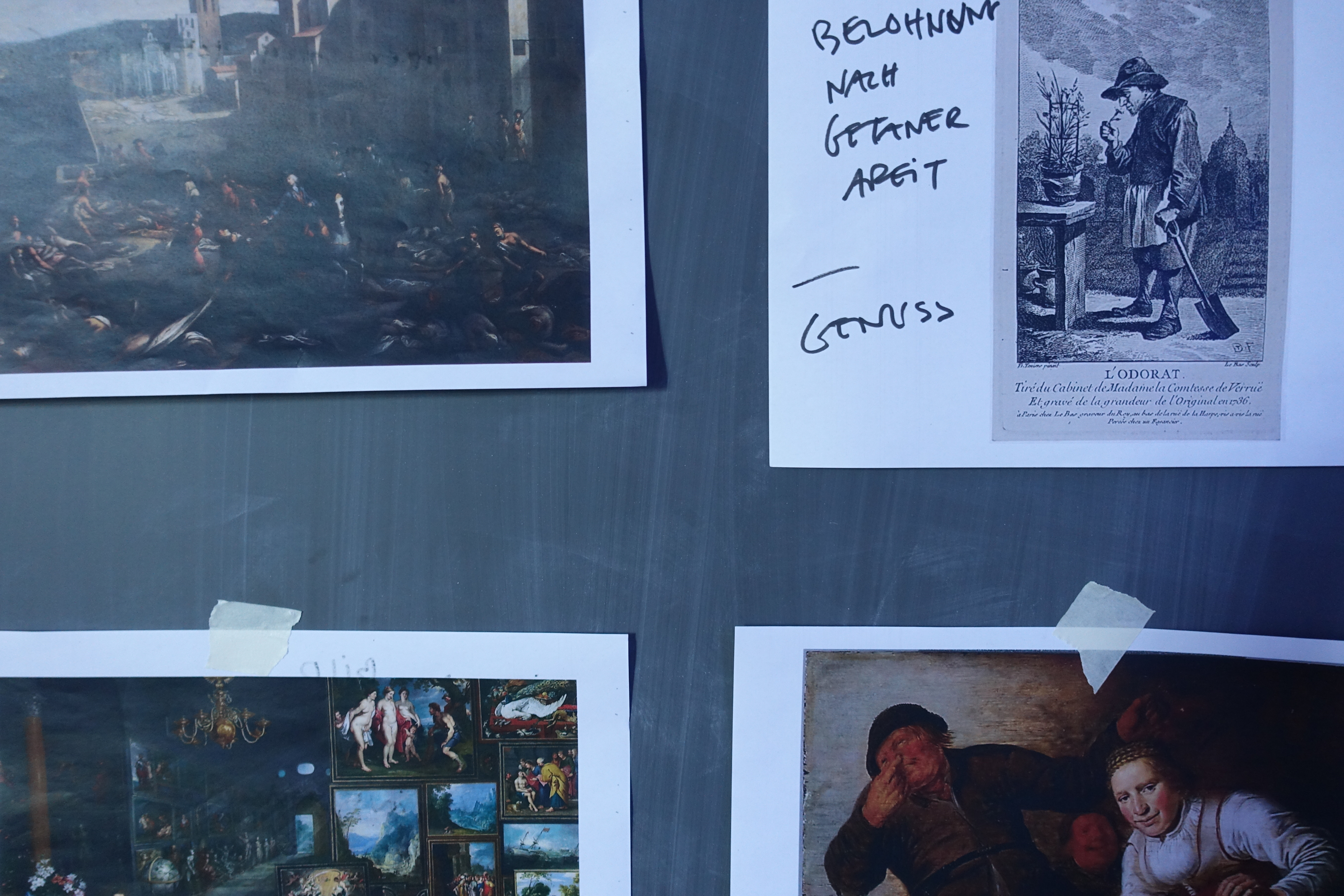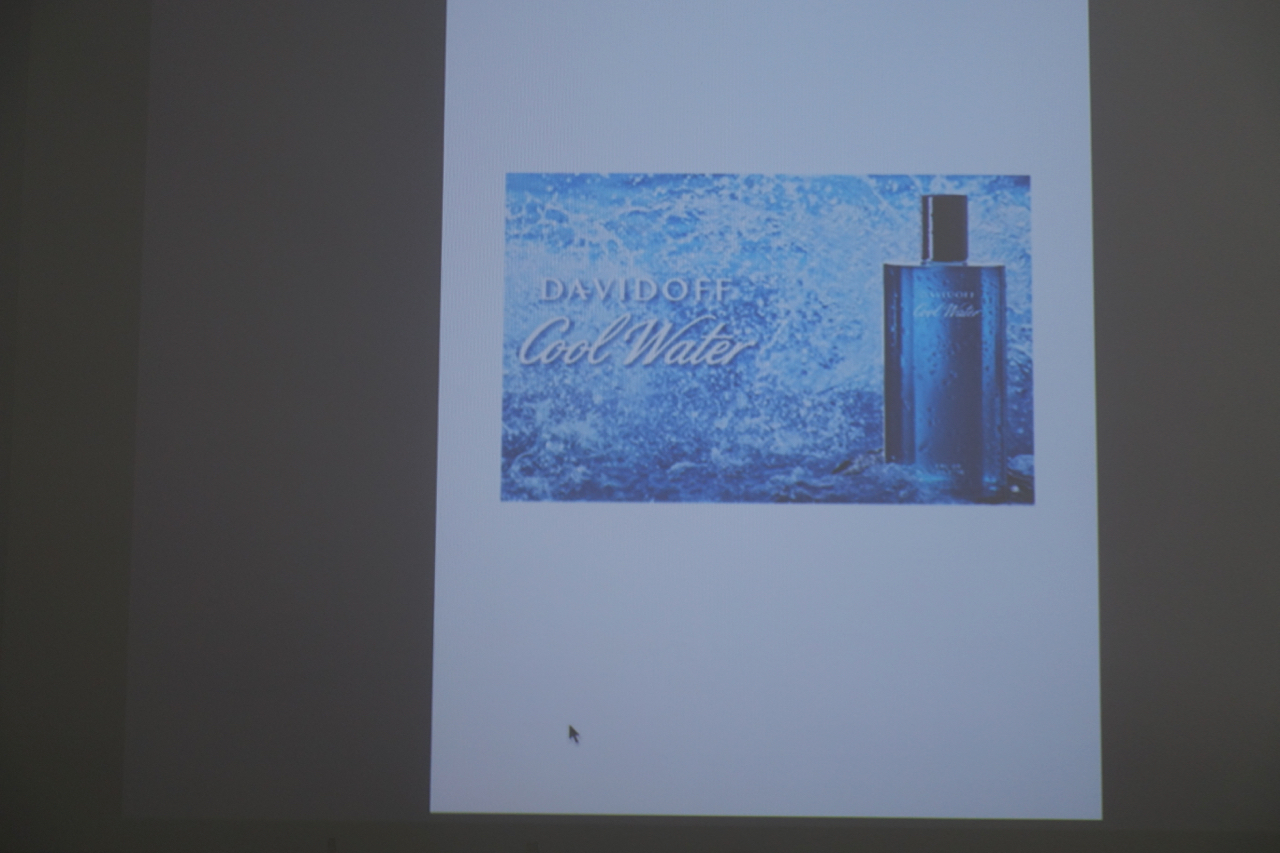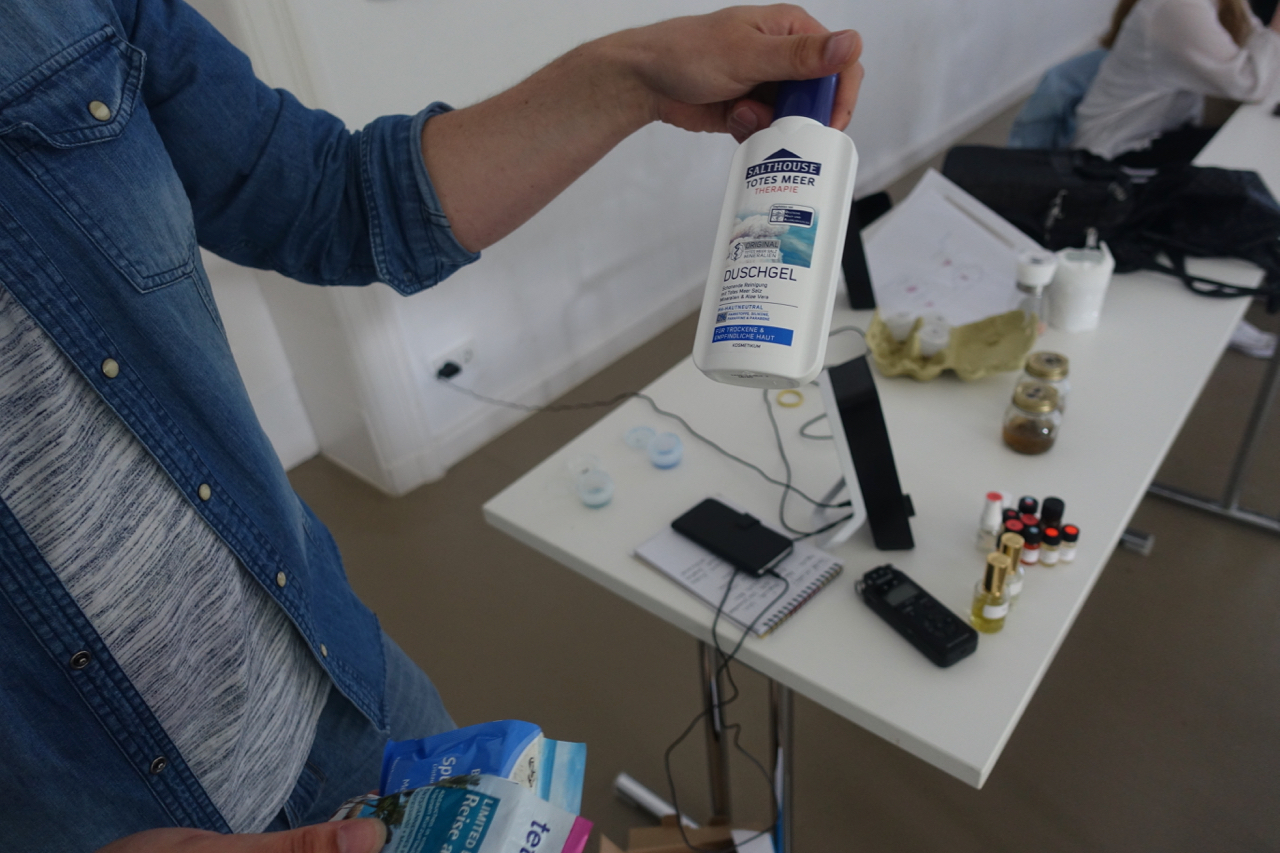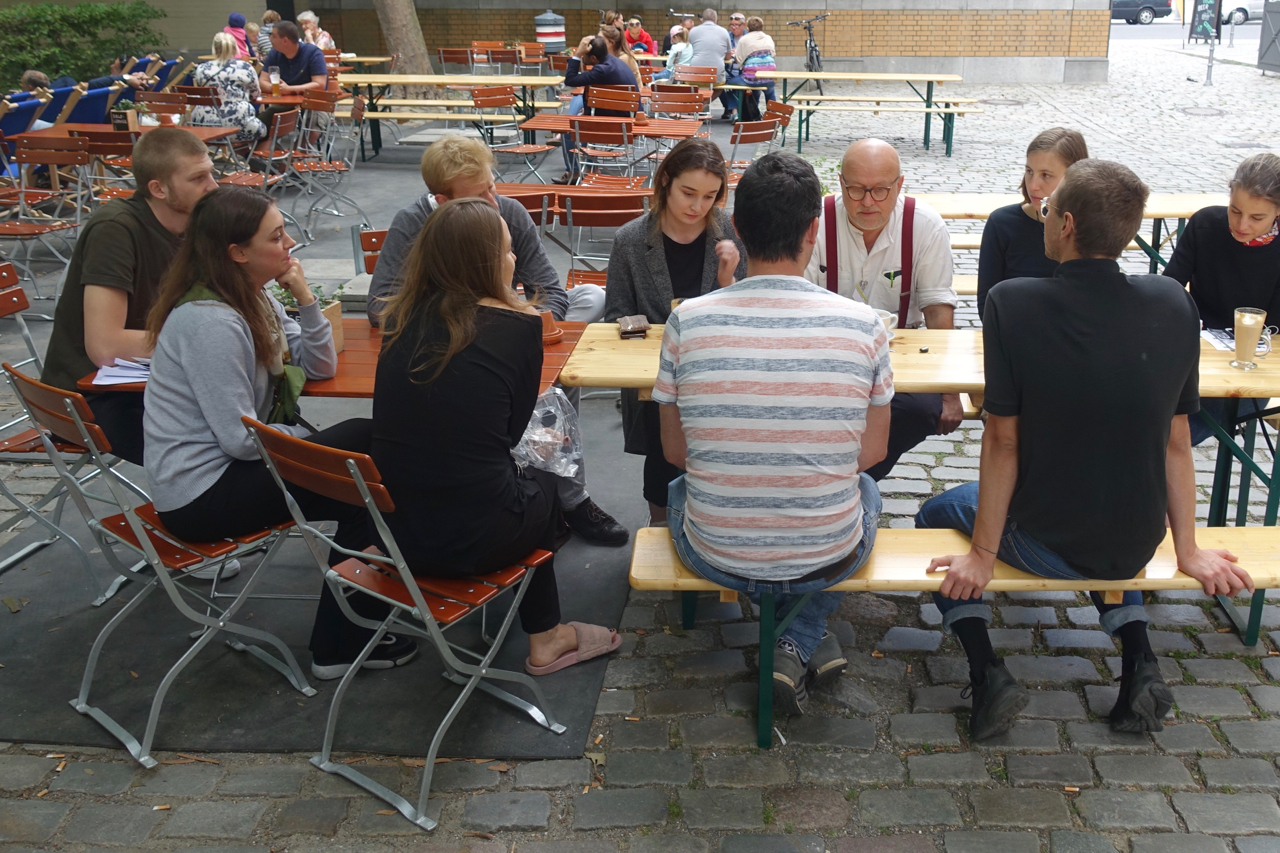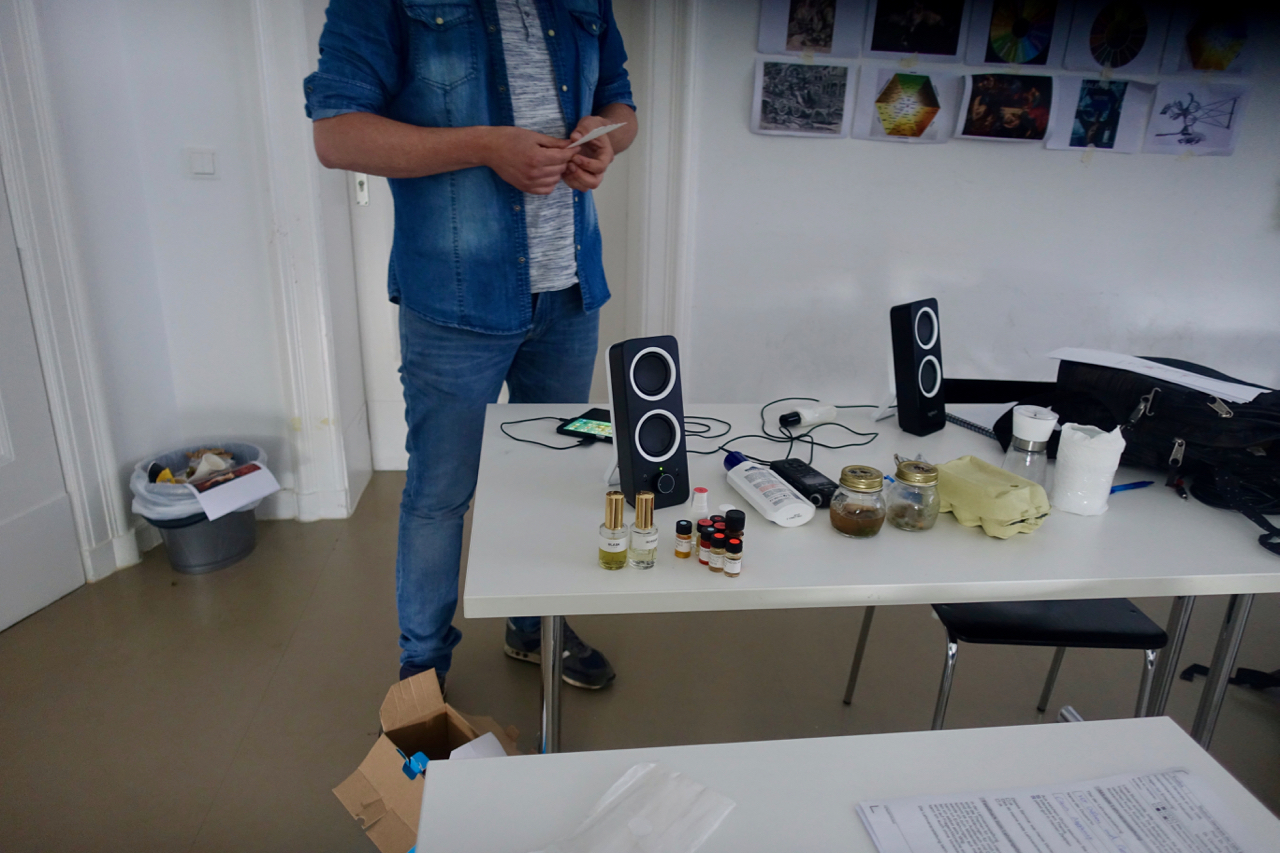How can a scent be translated? How can a scent enhance creative practices? How can scents inspire creative practices? These questions guided an experimental course on scent/smell at Berlin University of the Arts in Berlin and one of the largest institutions of higher art & design education in Europe. The course offered by Scent Culture Institute was part of the universities liberal arts program in the spring/summer semester 2018. seminar. Â
The seminar was entitled: “Experimenting with scents in creative processes”. It was offered as a course in interdisciplinary artistic practice & theory and taught by Claus Noppeney. The participants explored how scents can be used in their own creative practice – as a source of inspiration, a stimulus for creativity, a translational factor …
Moreover, there was a nuanced interaction with Berlin’s vibrant (scent-) cultural life. Since this seminar coincided with the new edition of Osmodrama we were highly delighted to meet with Wolfgang Georgsdorf.
The first part of the seminar provided an introduction to cultural and scientific theories of smells. It also used a number of practical exercises. Here are a few snapshots:
Following the first part the students returned to their regular creative practice and explored how to work with scent along the three core themes:Â enhancement, inspiration & translation. A few weeks later This second part focused on student presentations referring to the three core themes:
- A musician discussing the resonance of Davidoff’s Cool Water and its implications for music and sound noted: “The major seventh smells”.
- An actor reported on his experiments with invisible theatre while wearing conceptual perfumes. In fact, he imagined a figure wearing Blask by Les Christophs (Christophe Laudamiel/ Christoph Hornetz) and another figure wearing Dark Ride by Killian Wells. Acting out the figure in public transport he observed how people responded …
- An artist presented objects inspired by the smell of different fruits and vegetables.
- An architect showed how sketches of a room could convey different olfactory atmospheres.
- …
A special highlight of the seminar was the visit to Osmodrama currently exhibited at the Gropius Hall and the engaging discussion with Wolfgang Georgsdorf. Following his piece â€Quarter Autocomplete†the group explored the eartistic potential of time based olfactory art.
Here are some snapshots of the 2nd block:
Thanks a lot to Wolfgang Georgsdorf, Christophe Laudamiel, Andreas Wilhelm &Â Weronika Rodowicz.
[blog_subscription_form title=”” title_following=”You are already subscribed” subscribe_text=”” subscribe_logged_in=”Click to subscribe to this site” subscribe_button=”Click me!” show_subscribers_total=true]
